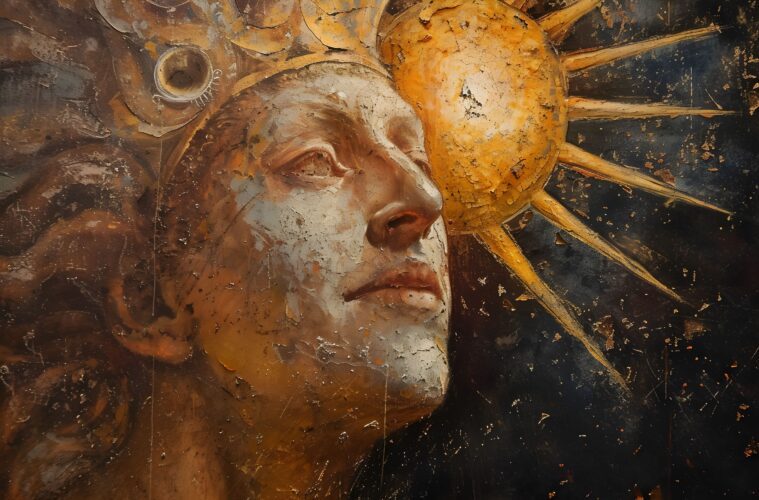Architecture is as old as man himself and has always played a central role as well as a telling indicator of peoples’ beliefs, innovations, and aesthetics. Nevertheless, even the most spectacular architectonic creations can sometimes give an impression of being complemented with some nice stuccowork. Of all them, wall art are perhaps the most diverse and versatile decoration tools, which can enrich, elaborate, and even alter architectural environment.
Big Pictures on the Wall – A Concept at the Intersection of Architecture and Feeling
Architecture offers the layer—that is, the set of walls, spaces and structures that give an organizational framework to people’s lives, occupation and social relationships. Advertising, however, brings a rather emotional and esthetic note to these locations different from what wall art does. It can be used to generate emotions, tell a story, and generate subjects that makes people focused.
For instance, when one environment is characterized by simplicity in its architectural design like, a slender and sleek look, vivid abstract painting wall art creates that burst of energy. Likewise, in a more formal environment typical for a Victorian house the wall decorations which include oil paintings or elaborate tapestries build up the spirit of the Victorian Age.
Architectural Styles Reinforcing
Wall art can complement an architectural design or be used intentionally to offset it to offer variety to the architecture. Here’s how different types of wall art can enhance various architectural styles:
- Modern Architecture: As suggestive of openness, lack of ornamentation and neutral hues, modern designs could profit from exciting and innovative pieces of wall art. Geometric patterns and bright colors should not be feared as they can really add some spice into these relatively minimalist interiors.
- Industrial Architecture: Industrial spaces are characterized by exposed brickworks, metal beams and concrete works. Artistic Décor: Big city murals or a rusty looking metal sculptures can replicate this unabashedly unpolished style and bring character into the home.
- Traditional Architecture: Traditional homes typically have complex elements and dense surfaces. Fine art that might include landscapes, portrait or classical designs also can give these spaces characteristic timeless look.
- Eclectic Architecture: Global styles can only be effective when they are blended into one. This style makes it possible to have very much fun when placing different pictures on the walls for example, creating a unique gallery style of different art periods, directions and techniques.
Creating Focal Points
The most essential areas that can be defined by wall art are that they are able to act as specific points of interest in a room. It’s a fact that big spaces with high ceiling, large walls or generous window areas attract attention; but they cannot always walk alone, and may look lost or merely decorated without due consideration. Art hangs on them and brings the eyes in those areas and gives the building an architectural sense of finality.
For example, a large single famous painting of a famous artist from floor to ceiling in a huge hall may also bring warmth with an individual touch. When correctly located at the premises, a single art piece adds the ambiance of plenty and functionality to a small room.
Adding Depth and Dimension
Great examples of this are the wall art that can be put on the wall to create some depth and dimension to a flat wall. It is possible to turn a boring wall into an exciting rocky work of art through the application of texturing techniques; it can be used in mixed media artworks or three dimensions pieces. This combination of textures is even more effective when it comes to spaces that are designed with minimalist tendencies, as such relationships provide the environment with dynamic that would not make it appear cold to the observers.
With furniture pieces or large posters or any piece of art that is metallic or has mirror Embedded in it acts like a mirror and can also be used to bounce light around hence being recommended in architectural designs where light needs to be reflected or where the size of the room is relatively small.
Ways of Architecting and Designing Spaces or Ideas for Planning Your Home
Whereas in architecture, it is possible to express ideas about beauty and usefulness, in wall art, there are individual ideas. It is a chance for the homeowners, the designers or an organisation to bring out their personality into a room. Family photos, commissioned artwork, or rarity found in a particular place can turn an architectural marvel into a sui generis space.
To illustrate, modern beautiful house can have family photographs transformed into modernistic art masterpieces. Likewise, a corporate office that is part of a hi-tech building could feature commissioned art the corresponds with the firm’s ethos of technology in its design.
Enhancing Spatial Flow
Thus in spacious large areas having open functional plans, artwork on the walls is exceptionally beneficial in area demarcation and traffic. Big art works can connect the area for living and the eating zone whereas group many paintings can separate spaces for dinner area and the relaxation zone. Thus, when selecting the pieces of art to be put on the walls, the designers should pay as much attention to the general harmony of the interior as to differences between one zone in the facility and another one.
The roles for which they lean most heavily are those that support architectural storytelling.
Architecture itself is indeed storytelling; the story that is often humbles itself to narrate is a story of culture, the actual representation of a technology or the ability to blend with nature. This narrative can then be supported by wall art. For instance:
At a coastal villa, seascapes are ideal or a simple picture or a view of the sea can be used.
And so in a sustainable home, the wall ornament could feature objects such as recycled wood to give off an environmental friendly theme.
The original stickers or paintings located in the historical building would make people travel back into that time frame.
Practical Aspects for Using Wall Art
To ensure wall art enhances rather than detracts from architecture, consider the following tips:
- Scale Matters: Select works that correspond to the size of the architectural interior. Larger pieces make a room feel cluttered and smaller pieces on large walls seem to disappear and become almost unseen.
- Color Coordination: Make the hue of the artwork complement those of the building complex it will be placed in. You can align the tones so that the overall aesthetics match or go for color contrasting, but these are two different sets of tastes.
- Lighting: Wall art also needs proper lighting in order to be highlighted properly. Any fixtures for instance the recessed lighting, spotlight or a natural source of lighting should highlight the art but not cause any glare or even cast a shadow.
- Placement: This means that one should be careful when planning where to fit wall art. Do not overcrowd a wall with too many items and always make sure that at least one good piece is displayed.
Final Thoughts
Why is it that wall art is not just a decoration but an ally when it comes to improving architectural wonders? Hence, bring them to life brings structure into space and gives them character and emotions, making them live and performing a function other than the aesthetic one. Whether you are constructing a minimalist contemporary house, a traditional and classical mansion or a post industrial stylish city apartment the right choice of the artwork can take your interior design to the next level. Absorb this nugget of knowledge to the premise that your wall and must tell a story that embellishes your architectural marvel.



